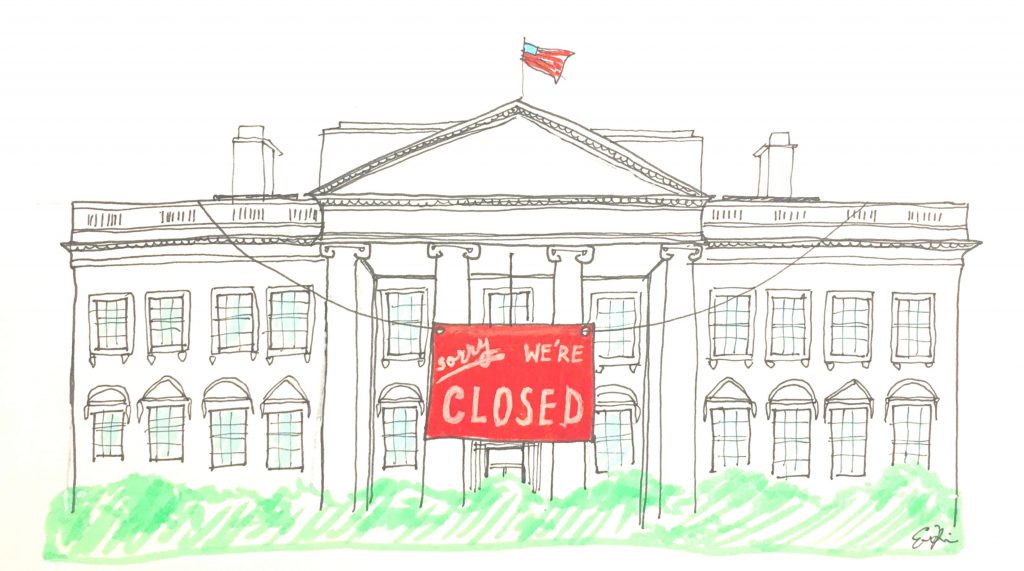As the shutdown crisis begins to ease in Washington, its profound effects are still being felt around the country as U.S. government agencies begin their long journey back to normal.
On December 22, 2018, the government declared a partial shutdown of the federal government after Congress and President Trump failed to agree on an appropriations bill authorizing government spending for the 2019 fiscal year. The bill in question authorized $7.81 billion for disaster relief, but more significantly, $5.7 billion in funding for border security and the construction of a US-Mexico Border Wall, an initiative that has remained at the forefront of President Trump’s agenda since his 2016 presidential campaign. The shutdown occurred when Trump refused to accept any appropriation bill that would not provide complete funding for the wall. Trump eventually agreed to cancel the shutdown for three weeks while both sides worked out their disagreements.
The effects of the federal shutdown were felt, not only in Washington, but across the country. Nearly 800,000 federal employees from nine executive departments were furloughed or had to work without pay. Federal services considered ‘essential’, such as mail delivery and law enforcement, continued operating through the shutdown. Yet, other departments, such as Homeland Security, Justice, State and Treasury, and several agencies including the Environmental Protection Agency and NASA, bore the brunt of the shutdown. Members of the Coast Guard, which falls under Homeland Security, worked without pay, marking the first time that members of the U.S. Armed Forces were not paid as the result of a government shutdown. For other members of the military, funding from past years sustained their pay. However, the Coast Guard’s mutual assistance program received a $15 million donation from USAA insurance, which distributed interest-free loans to service members to account for absent paychecks.
For some, if not most of these employees, living paycheck to paycheck is routine. As the days without pay dragged on, it became increasingly difficult for them to cover their monthly bills and many were forced to find new jobs. Transportation Security Administration workers called out sick in large numbers, most likely because they were looking for work elsewhere to make up for missed wages. A number of employees unable to play the waiting game any longer quit because of the financial hardship.
National Parks were closed and workers endured similar distress. Some parks remained open with help of funding from the states, but with limited staff. They struggled to keep up with visitors, prompting volunteers to step in to help. With limited staff, the concern for visitor safety became a problem. Published reports said three people died on National Park service land during the shutdown. There were questions about whether the shutdown had anything to do with the authorities not being immediately contacted, but at least one of the deaths did occur due to lack of resources available to get help.
Some government labs emptied, and with that came research delays, some of which were time sensitive. Routine inspections issued by The Food and Drug Administration as well as the Environmental Protection Agency ground to a halt when many of their workers were sent home. The dangers of these daily inspections not taking place could have been deadly if an outbreak in our foods or air were to emerge.
Federal court proceedings also slowed down, as lawyers asked for delays. The problem was most acutely felt in the immigration courts, where deportation proceedings were delayed–as ironic as it may be.
The shutdown was the longest in history for the US government, and many continue to question whether or not it was worth the dispute over the border wall issue.
Julia Zambito
staff writer
Graphic: Erin Kim

